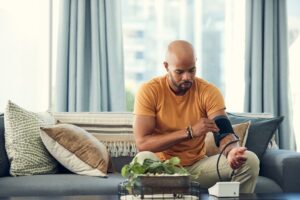 It seems easy enough to measure your blood pressure at home, right? All you have to do is buy a device, put it on your arm, and maybe push a button.
It seems easy enough to measure your blood pressure at home, right? All you have to do is buy a device, put it on your arm, and maybe push a button.
But the reality is that it’s not that easy. And an inaccurate blood pressure reading can throw measurements off significantly, which could be dangerous. High blood pressure, after all, is a common condition that is associated with heart attacks, strokes, and dementia.
Advertisement
Doctors often ask people with high blood pressure to track it at home.
The first thing you need is a validated device. There are plenty out there that claim they are cleared by the FDA, but guess what? The FDA does not validate the accuracy of devices.
Thankfully, the American Medical Association (AMA) and an international consortium do. You can find devices validated by the AMA at validatebp.org and an international list at stridebp.org.
Next, you’ll want to get the right type. Devices using upper arm cuffs are best, and you want to make sure it fits right. Most will be fine with the universal cuff, but you’ll need an alternate if you have a large or slender arm.
You won’t want to rely on a cuffless device, particularly a smartwatch, to give you an accurate reading. Most smartwatches and cuffless devices are not yet ready to be validated.
Advertisement
So, you’ve got your device. What now?
How you prepare for the measurement is also important, and it may be the most difficult.
Here’s what to do:
- Avoid caffeine beforehand
- Don’t exercise 30 minutes before the reading
- Avoid smoking
- Go the bathroom
- Wait at least 30 minutes after a meal
- Sit quietly for five minutes without distraction before the reading – no scrolling, reading, watching TV, talking – nothing.
- Sit in a chair that supports your back
- Keep feet flat on the ground, and don’t cross your legs
- Position and support your bare arm at heart level
- Keep palm up and muscles relaxed
- Don’t talk
- Take two readings one minute apart from each other.
